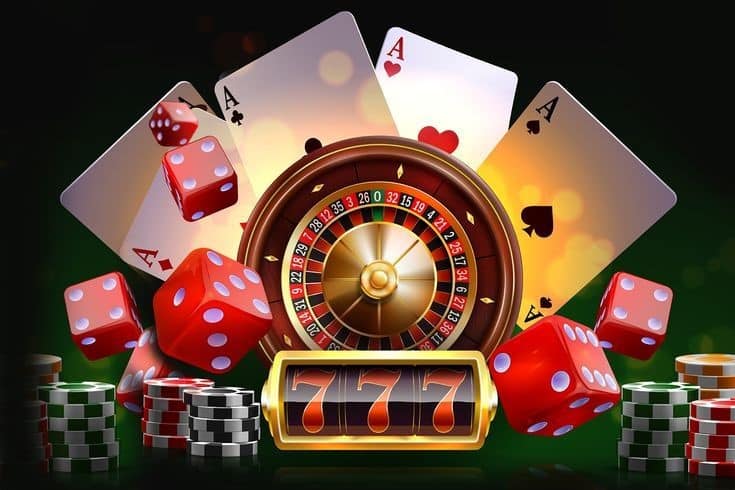
Within the dynamic and thrilling world of casinos, where luck and strategy intertwine, color and design play a critical role in drawing in gamblers. As soon as visitors step into a casino or log into a gaming platform, they are enveloped in a visual feast that grabs their attention and entices them to discover more. Vivid colors, captivating graphics, and creative layouts are carefully crafted to create an environment of excitement and anticipation, ultimately improving the gaming encounter.
While gamblers move through the dynamic landscape of casino games, they come across a range of designs that not only serve visual purposes but also influence feelings and decision-making. Hues like red and gold symbolize wealth and fortune, while soothing navy and emeralds can create a more tranquil environment. Grasping how these elements work together allows casinos to create an welcoming and stimulating atmosphere that encourages players to interact with the games, invest more time at the tables, and boost their general enjoyment.
The Psychology of Color in Gaming Establishments
Tint plays a crucial role in the creation of casino games, influencing players’ feelings and actions. Bright and striking shades, such as crimson and yellow, are often used to ignite enthusiasm and attract focus. These hues create a sense urgency and dynamism, encouraging gamblers to engage more eagerly with the activity. By intentionally selecting tints, creators aim to elicit emotions of satisfaction and excitement, which can enhance the complete player experience.
Distinct hues also have psychological meanings that can impact how participants perceive their odds of success. For case, green is frequently associated with luck and abundance, making it a popular choice in games like the roulette wheel and poker setups. This connection can lead gamblers to feel more hopeful and self-assured in their play, ultimately motivating them to wager more. Comprehending these connections allows game designers to design environments that enhance player satisfaction and engagement.
In addition, the interface of gaming interfaces often employs gradients and opposing shades to instruct player actions. For example, successful outcomes may be accentuated with vivid, differing colors, creating a visual incentive. This approach strengthens successful results and encourages repeated gameplay. By utilizing color psychology, gambling establishments can design games that not only captivate players but also hold them involved and invested in their gaming experience.
Creative Features that Attract Gamers
The aesthetic appeal of casino games is primarily influenced by the use of bold colors. Lively and contrasting colors are strategically chosen to create an appealing atmosphere that grabs attention. For instance, reds and golds often signify luck and prosperity, which is why they are common in the palettes of slot machines and table surfaces. These colors not only attract players in, but they also stir emotions related to thrill and anticipation, enhancing the overall gaming experience.
In addition to color, the design and organization of gambling games play a significant role in player attraction. Games are designed to be user-friendly, ensuring that players can easily understand the rules and mechanics. DK7 VIP Accessible interfaces, along with engaging graphics and motion, help maintain gamer interest and promote extended play sessions. The physical elements, such as the texture of the buttons and the sounds of the games, also contribute to a holistic sensory experience that keeps players immersed.
In conclusion, thematic elements in game design can greatly influence player choice. Many gambling games are inspired by media, fairy tales, or adventure themes, incorporating symbols and characters that connect with players. These themes create a sense of engagement and connection, making each game feel unique. When players feel a connection to the concept, they are more likely to choose that game over others, leading to higher participation and enthusiasm within the gambling environment.
Case Studies: Notable Gambling Slot Designs
One prime example of effective casino game design is the popular slot machine series based around blockbuster movies. Games such as those based on the Wizard of Oz and Game of Thrones utilize vibrant colors and superior graphics to immerse players in well-known narratives. The employment of moving visuals and entertaining sound effects captures the interest of players, building an psychological connection to the theme. This strategy not just encourages longer play but also boosts the overall gaming experience, yielding increased player retention.
Another notable case is the use of the psychology of color in table games like 21 and the wheel. Casinos often develop these games with rich reds and greens, colors traditionally linked with luck and wealth. For instance, the emerald felt on a blackjack table provides a relaxing effect, while the crimson accents in the wheel invite thrill. This deliberate use of color helps to create an inviting atmosphere that motivates players to engage, fulfilling their psychological impulses and increasing their enjoyment.
Finally, social casino games that feature social features and bright, lively designs have experienced remarkable success in engaging players. Games like Zynga’s Poker and Slot-O-Mania leverage striking colors and playful animations to create an inviting online environment. The inclusion of leaderboards, social sharing options, and in-app rewards promotes competition and community, attracting players in for longer sessions. Such designs merely make the games visually appealing but also highlight community engagement, a key factor in player retention and engagement within digital casino environments.